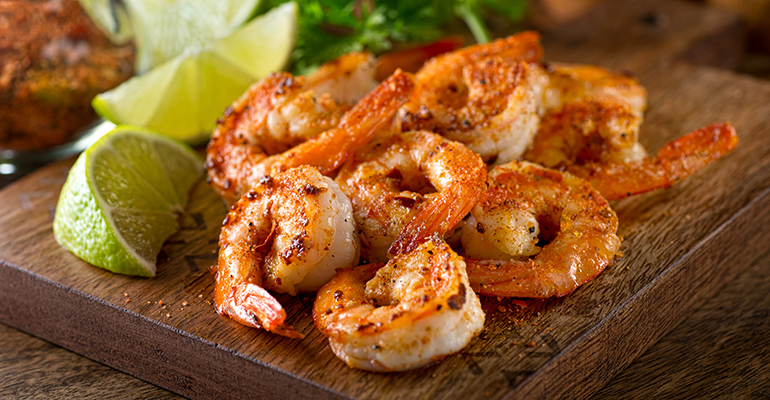News
The fish and seafood alternative boom in Asia
1 Mar 2021The popularity of fish and seafood in Asia has fuelled a rise in recent plant-based and cell-cultured product development and strategic investment. Products that cater to local palates are crucial to ensuring consumer engagement, say industry insiders.
Since 1961, average per capita fish consumption in Asia has increased by 2% per year and China’s share of global fish consumption has risen from 10% in 1961 to 36% in 2017, according to figures from the United Nations’ Food and Agriculture Organization (FAO).

Stronger economies, a growing middle class, urbanization, and the growth of Asian fish production and aquaculture are all fuelling this demand. However, the growth in global fish and seafood consumption is depleting fish stocks while concerns about heavy metal contaminants and antibiotic use in fish farms are growing. This, in turn, is generating demand for alternative fish and seafood from plant-based and cell-cultured sources.
Reflecting confidence in this small but growing segment, a number of major seafood producers are tapping into the trend through both product development and strategic investments.
This year, seafood giant Thai Union announced plans to launch plant-based prawns while Vietnamese fish producer Vinh Hoan, which claims to be the world’s biggest producer of pangasius, invested in Chinese cultured meat and seafood start-up Avant Meats through the acquisition of Vinh Technology.
Key players
There are a number of regional players to look out for. Singapore’s Shiok Meats makes cell-cultured crustaceans such as prawns, crab, and lobster, and has plans to launch products commercially in 2022 while Chinese plant-based firm Zhenmeat recently announced the launch of two new products, pork tenderloin and crayfish.
Hong Kong-based New Singularity makes plant-based seafood using microalgae and mycelium. The start-up enjoys monthly sales of RMB12,000 and has developed three products so far - shrimp, tuna and grilled eel fillets – using coconut shell to replicate shrimp tails, according to venture capital and accelerator firm BRINC.
Shanghai-headquartered HERO Protein makes chicken, beef, and seafood analogues and recently (February 2021) announced the closing of a pre-seed funding round that raised US$85,000. The company’s CEO, Edward Weng, said HERO Protein’s aim was to develop a portfolio of products that combined food tech used by global players such as Impossible Foods and “the domestic know-how to curate delicious products specifically catered to the Chinese palate, at prices affordable for a broader range of Chinese consumers”.
Catering to the Asian palate: The case of fish maw
Appealing to local food preferences is crucial to mainstreaming plant-based and cell-cultured products in Asia, according to non-profit organisation that promotes an animal-free food industry, The Good Food Institute (GFI). In Asia, this means producing fish and seafood as well as meat.
Although Western companies have tended to focus on beef burgers as the ‘holy grail’ of plant-based and cell-based meat alternatives, burgers do not have the same culinary importance in Asia. Eating beef is taboo for Hindus in India while in China and Southeast Asia, pork, chicken and seafood is more popular and widespread.
In 2019, China’s Avant Meats produced its first product: animal-free fish maw. Fish maw is the swim bladder of large fish such as sturgeon. Prized for its anti-ageing properties (it has a high collagen content), fish maw is one of the most expensive parts of the fish and is also used in traditional Chinese medicine to promote lung and kidney health.
It may seem strange for a food company to focus on producing a high-value but relatively niche food product. However, the choice was a brilliant example of how companies from different culinary cultures develop products based on a deep understanding of local market dynamics and consumer preferences, said Elaine Siu, managing director for Asia-Pacific of GFI.
“Think about why people are consuming a certain product. she wrote in an online blog. “Some foods are necessities that provide us with essential nutrition and energy to function; some are consumed in ways more akin to supplements or nutraceuticals. Fish maw is the later. Imagine if you are consuming a type of food in order to strengthen your health. Wouldn’t a cultivated option that is 100% free from mercury, pollutants, antibiotics, and micro-plastics be more attractive than what is currently offered on the market?”
The choice also made sense in terms of Avant Meats’ business strategy. By initially focusing on high-value fish maw, it could then channel the profits into financing more everyday products, such as fish fillets. Additionally, it showed the importance of taking cultural considerations and regional culinary preferences into account.
Siu added: “The plant-based and cultivated meat space is about so much more than burgers. It’s not news that many innovators are focusing on alternatives to animal products beyond beef, especially in Asia, where consumption of pork, poultry, and seafood are much more prominent. The actual part of an animal and the type of end product are also important to consider – as shown by fish maw.”
